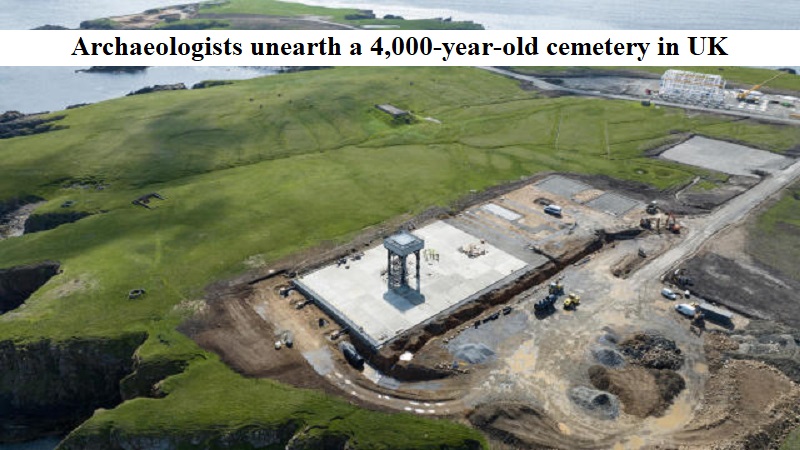
Last week, a team of archaeologists uncovered a 4,000-year-old burial ground in the Shetland Islands, located in northern Scotland, United Kingdom. The remarkable find was made amidst the construction of the SaxaVord spaceport, the UK’s inaugural rocket launch site.
The cemetery, believed to be a site for ritual cremations dating back to the Bronze Age, was discovered during the groundwork for the rocket launchpad on the Lamba Ness peninsula in Unst. According to reports, the site comprises pits, cremated human remains, and a circle of buried boulders, with estimated origins between 2200 and 1800 BC. The AOC Archaeology group is currently evaluating the site’s significance.
Katie O’Connell, a member of the AOC Archaeology group, stated that they came across several deposits of burnt bone, likely associated with cremation rituals. They believe that due to the considerable number and density of cremations, this site may have served as a continuous cremation cemetery during prehistoric times.
One of the most notable features of the discovery is the presence of a “quartz setting,” a finding described by the AOC Archaeology member. Quartz has been associated with symbolic significance in prehistory and has been discovered in connection with burial tombs, rock art panels, and carefully deposited at domestic sites.
Shetland’s regional archaeologist, Val Turner, explained that the boulders’ alignments, pits, and quartz rock setting suggest the possibility of a ritual complex at the site. She expressed her excitement about the find, noting that while the Shetland Islands are home to numerous archaeological sites, this is the first-ever Bronze Age cremation cemetery in the region.
The researchers are eager to conduct ancient DNA analysis to gain insights into the number of individuals buried at the site and gather more information about its historical significance. Fortunately, the discovery is not expected to disrupt the ongoing work at the SaxaVord spaceport, which is slated to witness its inaugural rocket launch in October.
The SaxaVord Spaceport’s initial plans included the construction of three commercial launch pads and a ground station at the location. However, in light of the ancient cemetery’s discovery, they are now considering preserving the site.
Frank Strang, the chief executive of SaxaVord spaceport, expressed great enthusiasm about the discovery, emphasizing their support for further research to uncover the cemetery’s complete story. He humorously highlighted the contrast between the Viking heritage of Unst and the spaceport’s modern ambitions, with the discovery revealing that the site has been a hub of activity for over 4,000 years, bridging the Bronze Age to the Space Age.

Post Your Comments